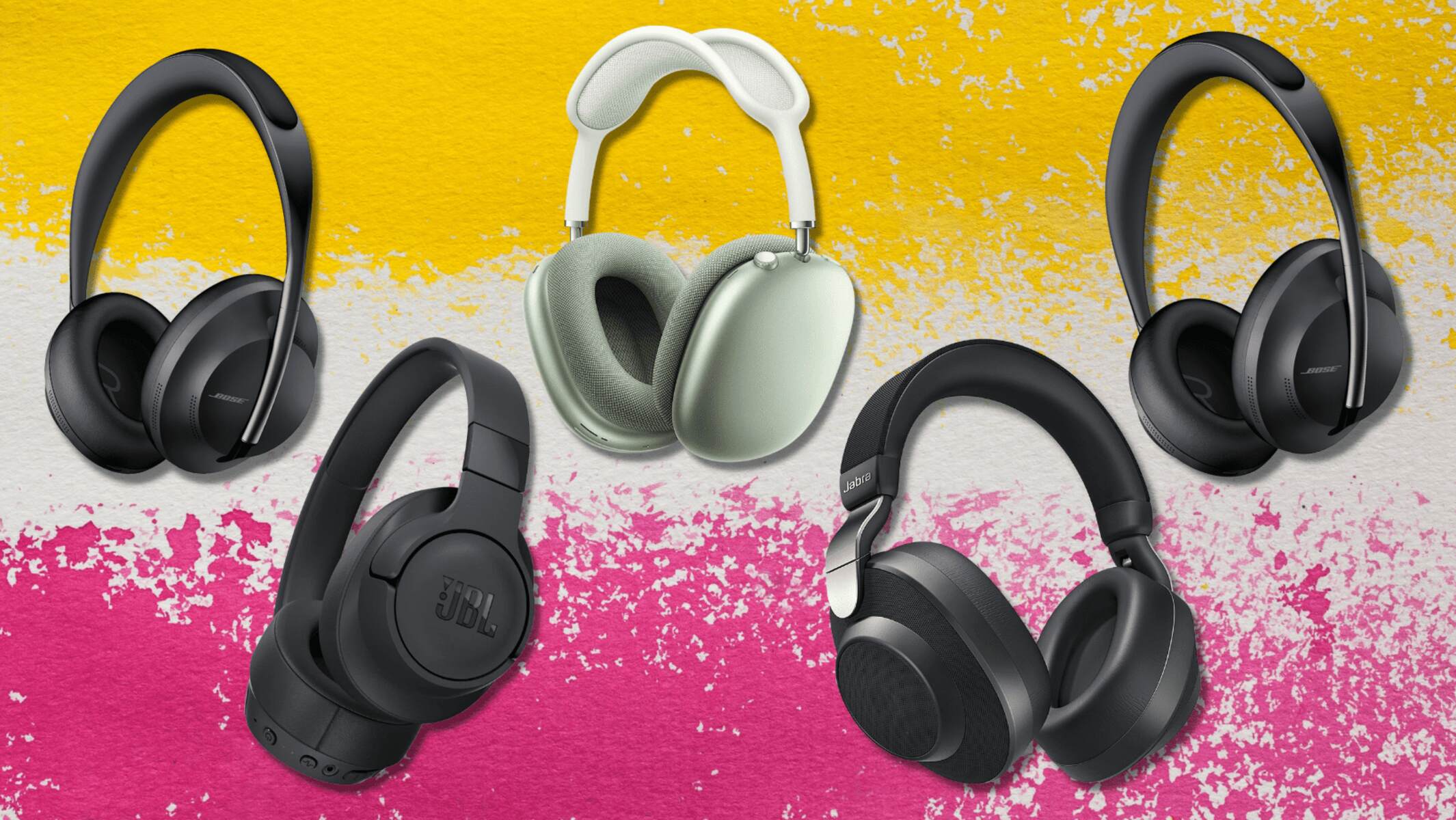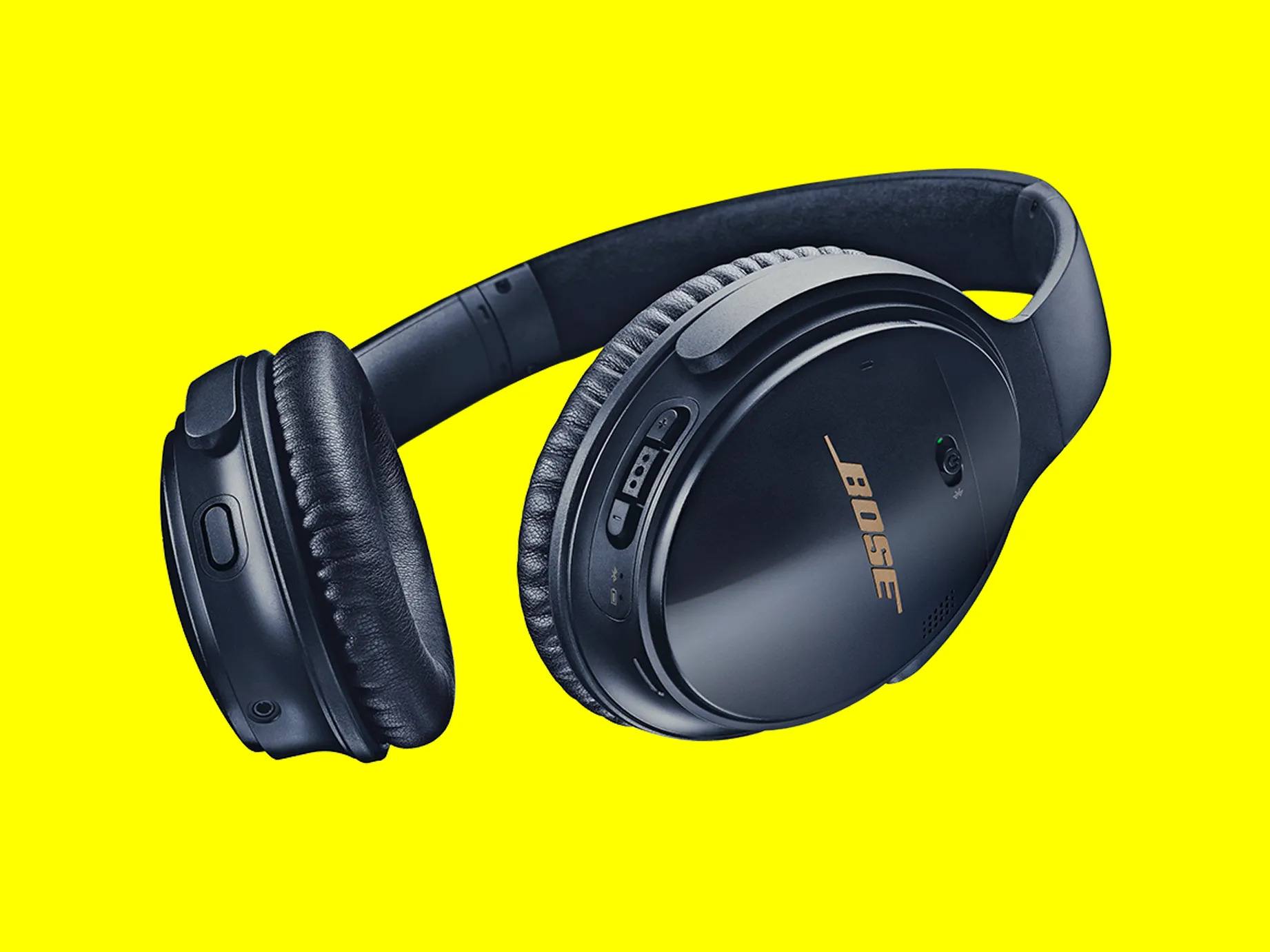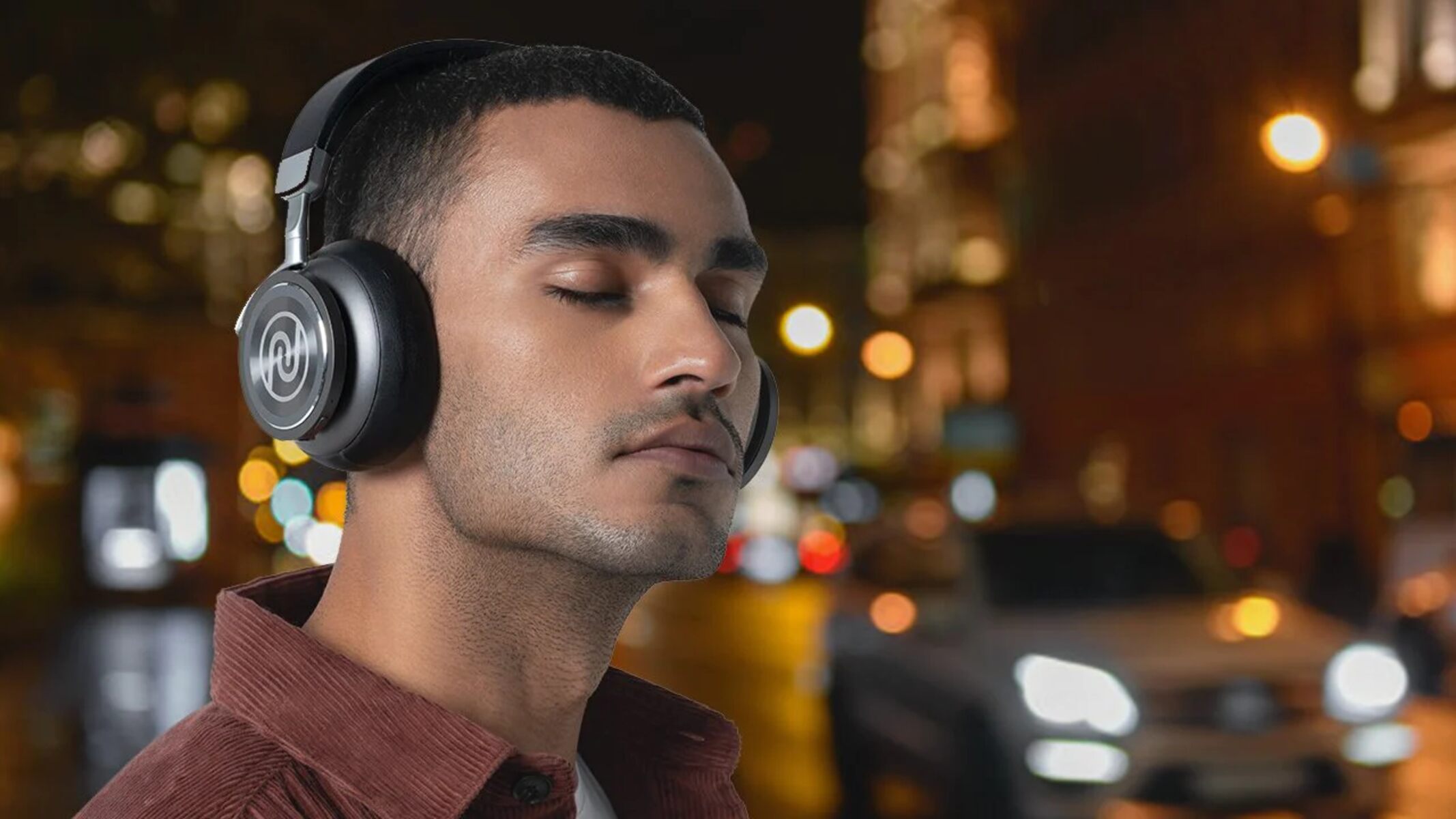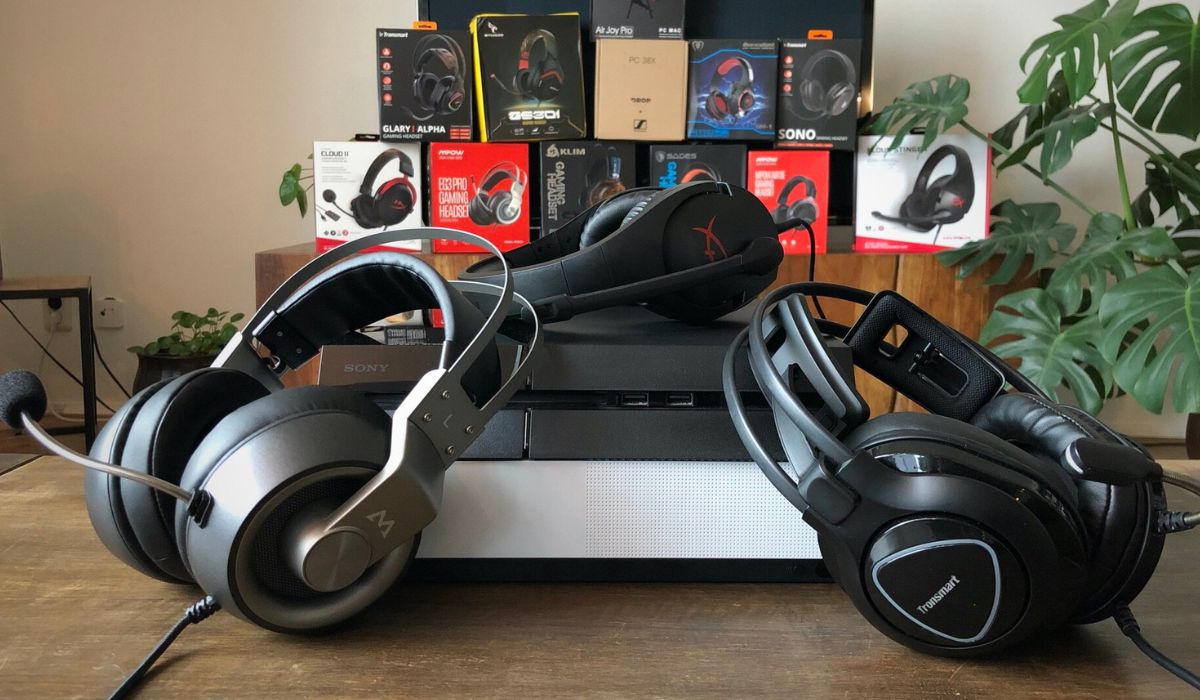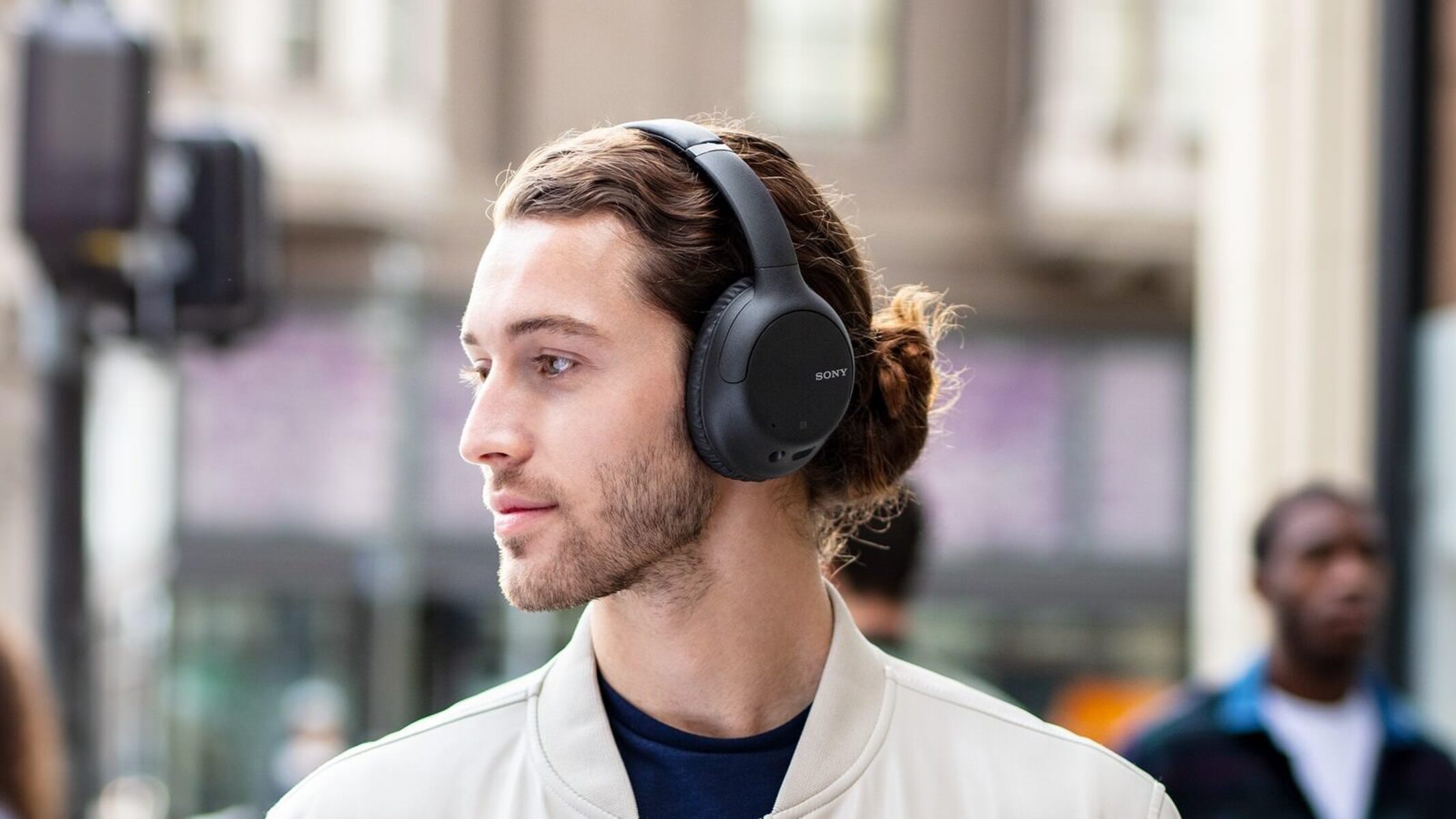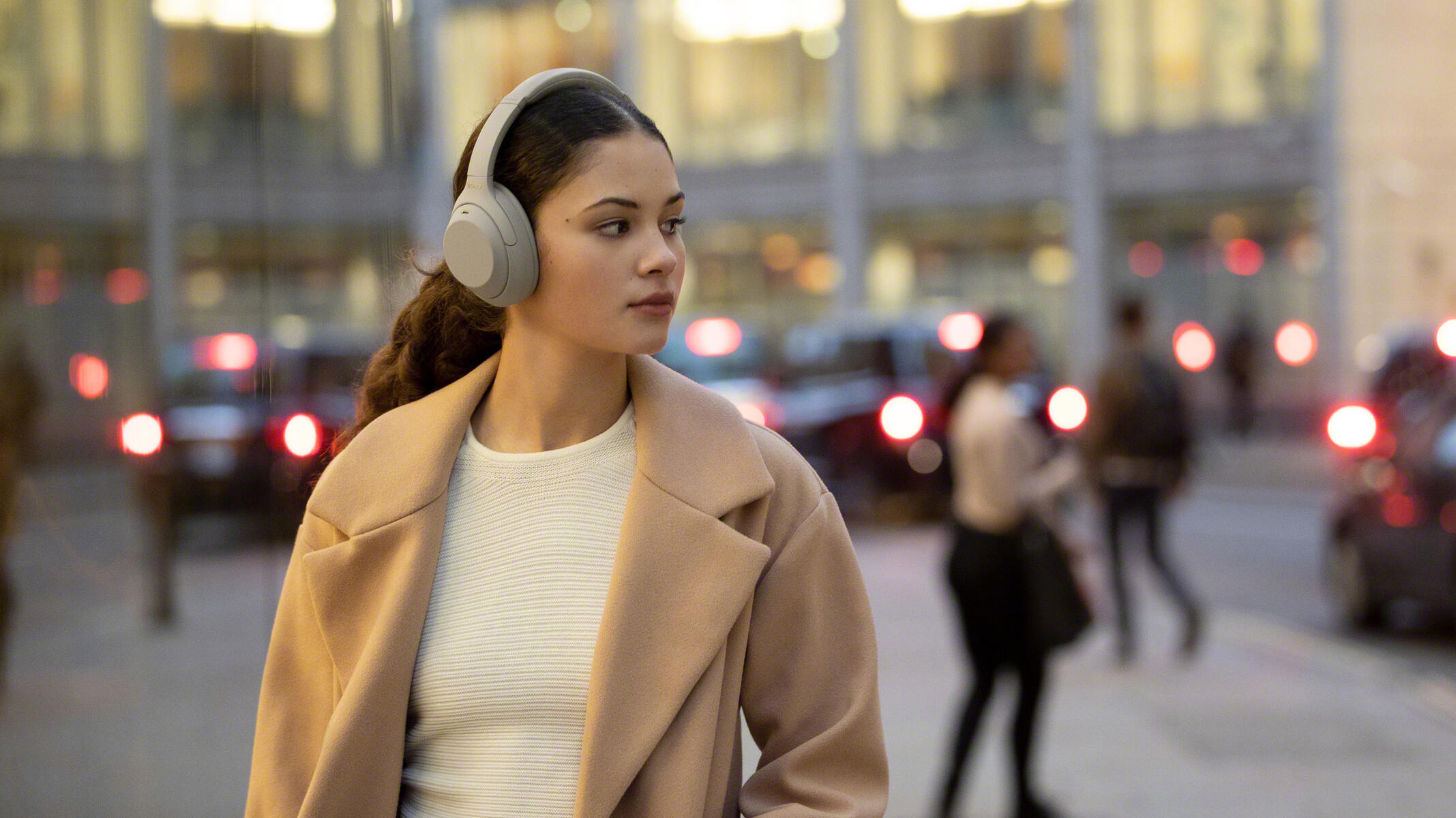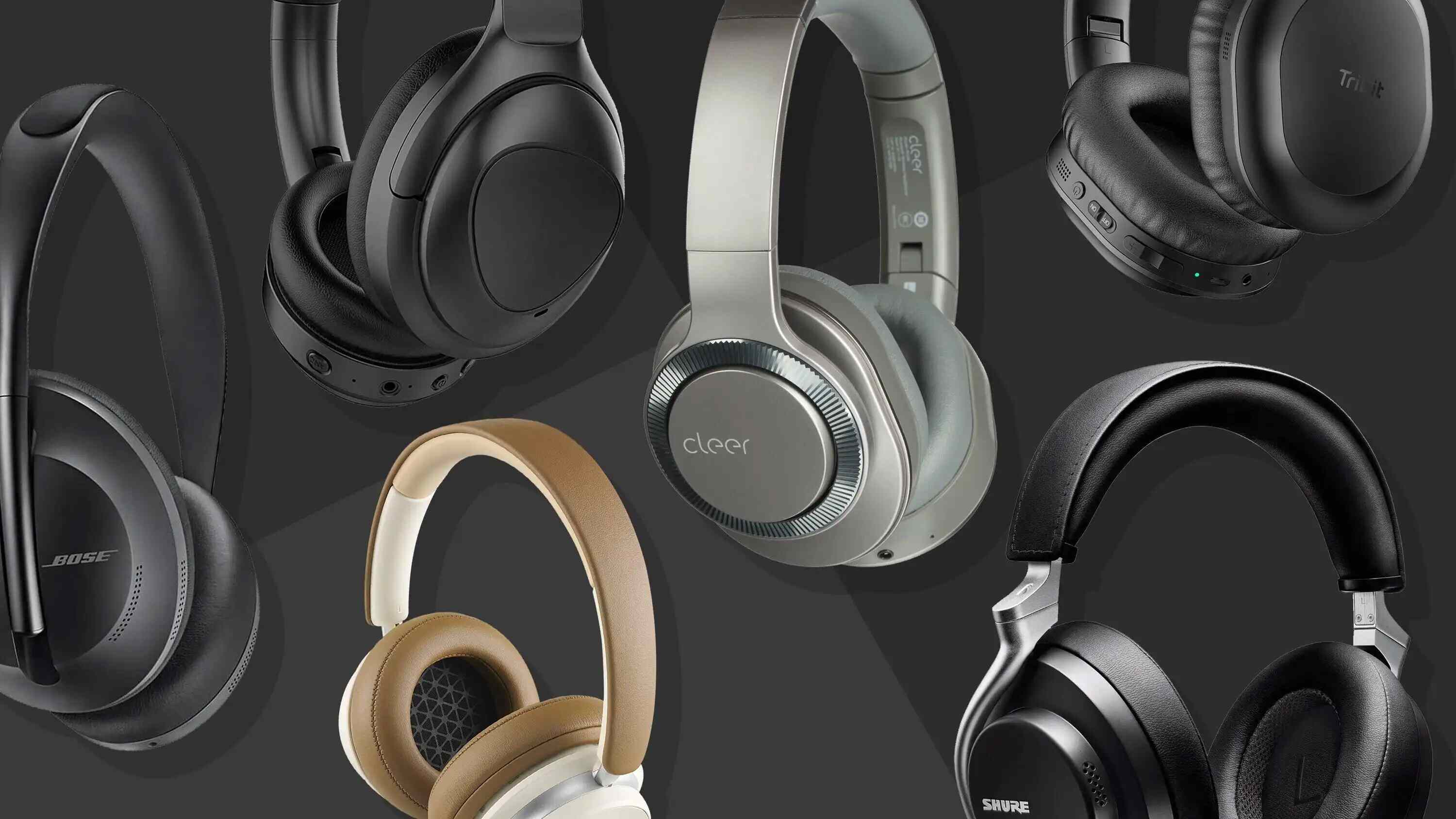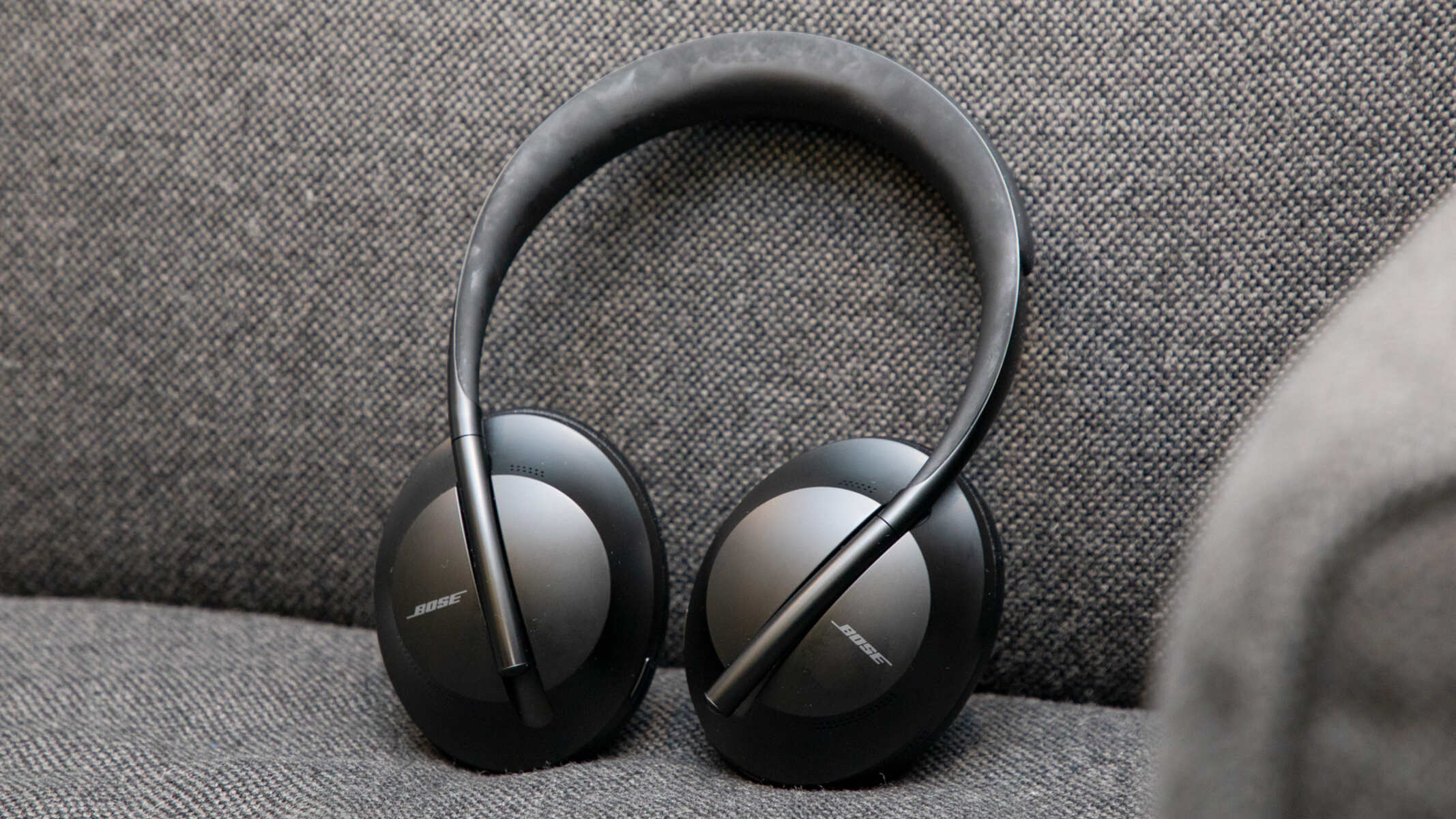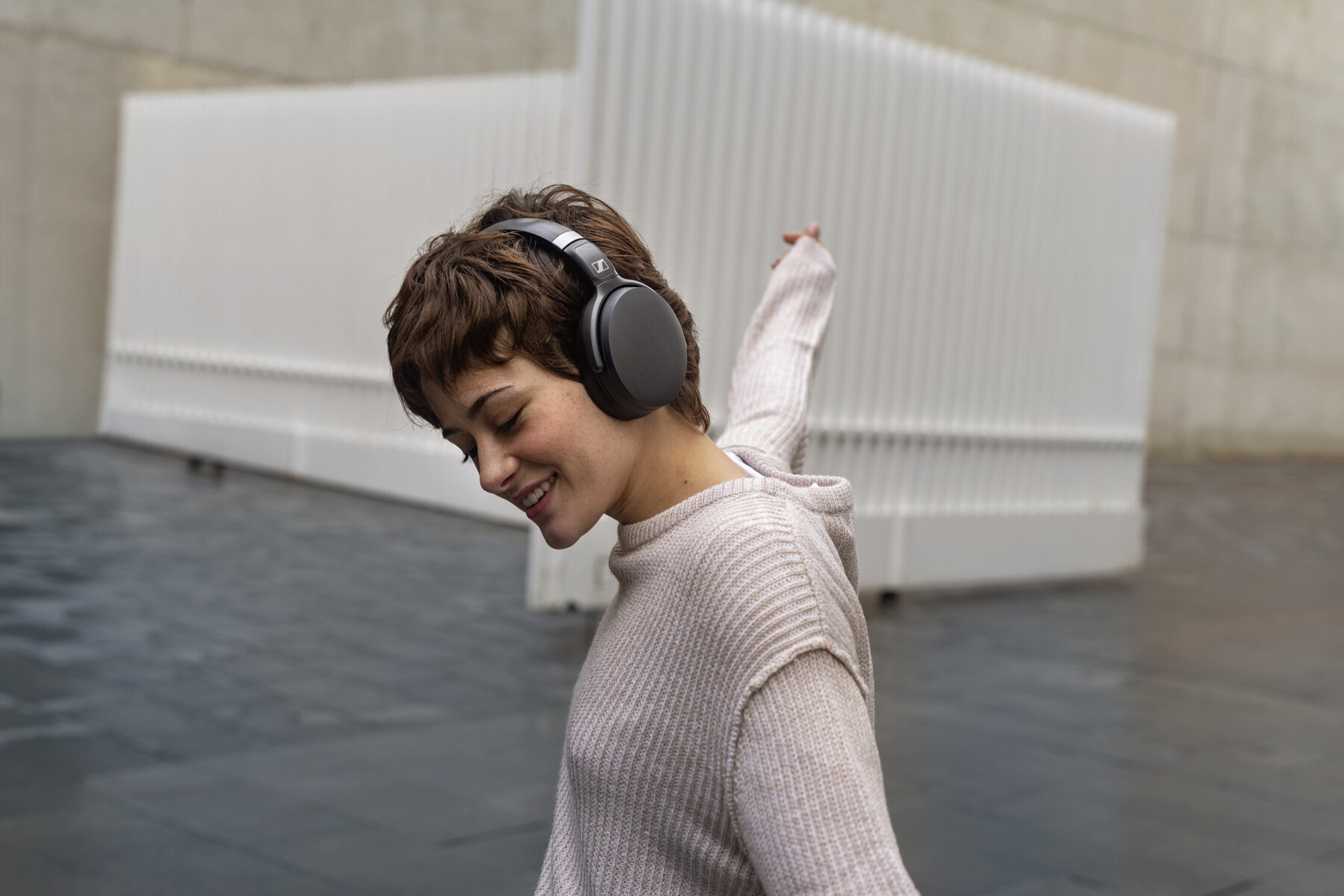Introduction
Welcome to the world of noise cancelling headphones! In today’s fast-paced and noisy environment, finding solace and tranquility can be challenging. Fortunately, noise cancelling headphones offer a solution to this problem by providing a sanctuary of peace wherever you go.
Noise cancelling headphones have gained popularity in recent years due to their ability to block out unwanted external sounds and immerse you in your own world of music or silence. Whether you’re a frequent traveler, a music enthusiast, or someone who simply craves a quiet moment, noise cancelling headphones can transform your listening experience.
But before we delve deeper into the world of noise cancelling headphones, let’s understand what they are and how they work. These headphones employ advanced technology to neutralize the ambient noise around you, allowing you to focus on the audio you want to hear.
Additionally, noise cancelling headphones come in various types and price ranges, making it crucial to understand the options available to make an informed decision. This article will guide you through the different types of noise cancelling headphones, the pros and cons of each, and factors that influence their pricing.
Whether you’re a budget-conscious shopper or willing to splurge on a premium pair, we’ll help you find the perfect noise cancelling headphones that meet your requirements and budget.
So, put on your favorite tunes or enjoy the blissful silence as we explore the fascinating realm of noise cancelling headphones.
What are noise cancelling headphones?
Noise cancelling headphones are a type of headphones that use advanced technology to reduce or eliminate the ambient noise around you. They are designed to create a quieter environment and enhance the listening experience by isolating the audio you want to hear.
Unlike regular headphones, which primarily rely on passive methods such as padding and insulation to block out noise, noise cancelling headphones go a step further by actively counteracting external sounds. They achieve this through a combination of hardware and software components.
The primary function of noise cancelling headphones is to detect external sounds and generate inverse sound waves to cancel them out. This process is known as active noise cancellation (ANC). By producing these inverse sound waves, noise cancelling headphones effectively neutralize the ambient noise, allowing you to enjoy your audio content without distractions.
Noise cancelling headphones are particularly effective at reducing low-frequency sounds, such as the hum of an airplane engine or the rumble of a train. They can significantly enhance your music listening experience, as well as provide a peaceful environment for concentration or relaxation.
It’s important to note that noise cancelling headphones do not completely eliminate all sounds. While they excel at reducing constant, low-frequency noises, they may have limitations with sudden or high-pitched sounds. However, many modern noise cancelling headphones come equipped with additional features to address this, such as multiple microphones and advanced algorithms.
Additionally, noise cancelling headphones can be used with or without audio playback. Even when you’re not listening to music or media, you can simply turn on the noise cancellation feature to enjoy a quieter and calmer environment.
Now that we’ve covered the basics of noise cancelling headphones, let’s delve into the various types of noise cancelling headphones available and how they work.
How do noise cancelling headphones work?
Noise cancelling headphones are equipped with sophisticated technology that allows them to reduce or eliminate ambient noise. The process involves three key components: microphones, noise cancellation circuitry, and speakers. Let’s take a closer look at how each of these components work together to provide a peaceful listening experience.
1. Microphones: Noise cancelling headphones are equipped with one or more microphones strategically placed on the ear cups. These microphones pick up the external sounds and convert them into electrical signals.
2. Noise Cancellation Circuitry: The electrical signals captured by the microphones are then processed by the noise cancellation circuitry. This circuitry analyzes the incoming sound waves and generates an equal but opposite sound wave, known as the anti-noise, or inverse sound wave.
3. Speakers: The anti-noise generated by the noise cancellation circuitry is fed back into the headphones through the speakers. These speakers emit the anti-noise along with the audio you are listening to.
When the anti-noise combines with the external noise, they cancel each other out, resulting in a significant reduction in ambient sounds. This cancellation process is most effective for constant and predictable sounds, such as the low-frequency hum of an airplane engine or the rumble of a bus.
It’s important to note that noise cancelling headphones work best for continuous background noise, as opposed to sudden or high-pitched sounds. The effectiveness of noise cancellation also depends on the quality and design of the headphones. Higher-end models often feature advanced algorithms and multiple microphones for improved noise reduction.
Some noise cancelling headphones also offer different modes or levels of noise cancellation, allowing you to adjust the amount of external sound you want to block. This can be particularly useful in situations where you still want to maintain some awareness of your surroundings, such as when commuting or working in a shared workspace.
In addition to active noise cancellation, many noise cancelling headphones also provide passive noise isolation. This is achieved through the physical design of the headphones, including the use of cushioned ear cups that form a tight seal around your ears, preventing external sounds from leaking in.
Now that you have a better understanding of how noise cancelling headphones work, let’s explore the different types of noise cancelling headphones available in the market.
Types of noise cancelling headphones
Noise cancelling headphones come in various types, providing different levels of comfort, portability, and audio quality. Understanding the different types can help you choose the one that best suits your needs. Let’s explore the main types of noise cancelling headphones available:
1. Over-ear headphones: Also known as circumaural headphones, over-ear headphones feature large ear cups that fully enclose your ears. These headphones provide excellent noise isolation by creating a seal around your ears, effectively blocking out external sounds. Over-ear headphones are known for their comfort and immersive audio experience, making them ideal for long listening sessions and audiophiles.
2. On-ear headphones: On-ear headphones, also called supra-aural headphones, rest on the ears rather than fully enclosing them. These headphones are typically more portable and lightweight compared to over-ear models. While they may not provide as much noise isolation as their larger counterparts, on-ear headphones still offer effective noise cancellation and are a popular choice for everyday use.
3. In-ear headphones: In-ear headphones, or earbuds, are small and compact headphones that fit directly into your ear canals. They are highly portable and convenient, making them a popular choice for on-the-go use. In-ear headphones often utilize a combination of passive noise isolation and active noise cancellation to reduce external sounds. They are available in both wired and wireless options.
4. True wireless earbuds: True wireless earbuds are a type of in-ear headphones that have no wires connecting the earbuds to each other or to a device. These earbuds offer maximum freedom of movement and are often equipped with advanced noise cancelling technology. True wireless earbuds are compact, lightweight, and perfect for those who prefer a minimalist design.
5. Bone conduction headphones: Unlike traditional headphones that go over or into the ears, bone conduction headphones work by conducting sound through the bones of your skull. These headphones leave your ears open, allowing you to remain aware of your surroundings while still enjoying your audio. Bone conduction headphones are a unique alternative for individuals who prefer not to obstruct their ear canals.
Each type of noise cancelling headphones has its own advantages and considerations, so it’s important to determine which style aligns with your preferences in terms of comfort, audio quality, and portability.
Now that we’ve explored the different types of noise cancelling headphones, let’s weigh the pros and cons of using such headphones in the next section.
Pros and cons of noise cancelling headphones
Noise cancelling headphones offer a range of benefits that can enhance your listening experience. However, like any technology, they also have their limitations. Let’s explore the pros and cons of using noise cancelling headphones:
Pros:
- Reduced ambient noise: The primary advantage of noise cancelling headphones is their ability to significantly reduce or eliminate unwanted background noise. This allows you to focus on your audio content, whether it’s music, podcasts, or movies, without distractions.
- Improved audio quality: By blocking out external noise, noise cancelling headphones enhance the clarity and richness of your audio. You can enjoy the intricate details in your music or the dialogues in a movie, even in noisy environments.
- Enhanced concentration: Noise cancelling headphones can create a more conducive environment for concentration and productivity. They are particularly beneficial in noisy offices, cafes, or other crowded spaces, allowing you to stay focused on your work or studies.
- Reduced fatigue: Constant exposure to loud background noise can be mentally and physically draining. With noise cancelling headphones, you can reduce the overall sensory input, leading to less fatigue and stress on your mind and body.
- Privacy: Noise cancelling headphones provide a level of privacy by minimizing the chance of others hearing your audio content. This can be especially useful when you’re traveling or in a public setting.
Cons:
- Cost: Noise cancelling headphones are typically more expensive than regular headphones. Advanced noise cancelling technology and additional features contribute to their higher price tag.
- Power dependency: Noise cancelling headphones require power to operate their noise cancellation feature. This means they either need to be charged or rely on replaceable batteries. If the power runs out, the noise cancelling capability is compromised.
- Sound quality compromise: Some users may find that noise cancelling headphones sacrifice a bit of sound quality compared to high-end audiophile headphones. While the audio quality is generally excellent, discerning listeners may notice slight changes.
- Noise leakage: Although noise cancelling headphones can block out external noise, they may not completely prevent sound from leaking out. This can be a concern for those in close proximity to you, such as when traveling in a quiet environment like an airplane cabin.
- Reduced awareness of surroundings: Noise cancelling headphones, particularly those with effective passive noise isolation, can reduce your awareness of your surroundings. It’s important to exercise caution when using them in situations where you need to be aware of potential hazards, such as while walking on busy streets or at a construction site.
Considering these pros and cons can help you make an informed decision when choosing whether noise cancelling headphones are the right fit for your needs.
Factors that affect the price of noise cancelling headphones
The price of noise cancelling headphones can vary significantly based on several factors. Understanding these factors can help you determine the value you are getting for your investment. Let’s explore the main factors that influence the pricing of noise cancelling headphones:
1. Brand reputation: Established brands with a strong reputation in the audio industry often command higher prices. These brands have invested in research, development, and quality control, which can reflect in the pricing of their noise cancelling headphones.
2. Noise cancellation technology: The effectiveness and sophistication of the noise cancellation technology can impact the price of headphones. High-end models often feature advanced algorithms, multiple microphones, and improved noise reduction capabilities, resulting in a higher price point.
3. Build quality and materials: The quality of the materials used in the construction of the headphones can influence the price. Durable materials, such as high-grade plastics, metals, and premium cushioning, often contribute to a higher price tag.
4. Audio quality: Higher-priced noise cancelling headphones typically offer superior audio quality. They may have larger drivers, better frequency response, and more accurate sound reproduction, providing a more immersive listening experience.
5. Additional features: Extra features like wireless connectivity, touch controls, customizable EQ settings, and battery life can impact the price. The more features included, the higher the price of the headphones.
6. Brand licensing or collaborations: Some headphones may feature branding or collaborations with other companies or artists, which can increase their price. These special editions often appeal to collectors or fans of the brand or artist.
7. Design and aesthetics: The overall design and aesthetics of the headphones can contribute to the price. Premium designs, sleek finishes, and attention to detail may warrant a higher price due to the added craftsmanship and visual appeal.
8. Warranty and customer support: Headphones from reputable brands often come with longer warranty periods and better customer support, which can justify a higher price. The peace of mind and assurance of after-sales support add value to the product.
It’s important to note that while price can be an indication of quality, it doesn’t necessarily guarantee the best performance for your specific needs. Consider your budget, priorities, and desired features when evaluating the price of noise cancelling headphones.
In the next sections, we will explore budget, mid-range, and high-end options for noise cancelling headphones to provide you with a range of choices based on different price points.
Budget options for noise cancelling headphones
If you’re looking for noise cancelling headphones on a budget, there are several options available that offer decent performance without breaking the bank. While they may not have all the bells and whistles of higher-end models, these budget-friendly options can still provide a satisfying listening experience. Here are some budget options to consider:
1. Anker Soundcore Life Q20: These over-ear headphones offer impressive noise cancellation performance at an affordable price. They feature hybrid active noise cancellation technology, comfortable ear cups, and up to 40 hours of battery life. The sound quality is well-balanced, and they also have a built-in microphone for taking calls.
2. JBL Tune 600BTNC: These on-ear headphones from JBL deliver solid noise cancellation at an affordable price. With 12 hours of battery life and a lightweight design, they are comfortable for extended use. The sound quality is punchy and vibrant, suitable for various music genres.
3. TaoTronics SoundSurge 60: The SoundSurge 60 offers excellent value for money with its active noise cancellation and affordable price point. These over-ear headphones provide up to 30 hours of playtime, Bluetooth connectivity, and a foldable design for portability. The sound is clear and well-balanced, making them a popular choice for budget-conscious consumers.
4. SoundPEATS Q30 Plus: If you prefer in-ear headphones, the Q30 Plus from SoundPEATS is an affordable option with noise cancelling capabilities. These wireless earbuds provide decent noise isolation and a stable fit. With up to 13 hours of battery life and IPX6 water resistance, they are suitable for workouts and daily use.
5. Mpow H5: The Mpow H5 over-ear headphones offer a budget-friendly option for noise cancellation enthusiasts. With active noise cancellation and a comfortable design, they provide immersive sound quality. The battery lasts up to 30 hours, and they also have a built-in microphone for hands-free calling.
When considering budget options, it’s important to manage expectations and understand that they may not offer the same level of noise cancellation or audio quality as higher-priced models. However, they can still provide a significant improvement over regular headphones and offer a cost-effective solution for those on a tight budget.
Now that we’ve explored budget options, let’s move on to mid-range options for noise cancelling headphones.
Mid-range options for noise cancelling headphones
If you’re willing to invest a bit more for better features and performance, mid-range noise cancelling headphones offer a great balance between cost and quality. These headphones provide improved noise cancellation, audio fidelity, and additional features to enhance your listening experience. Here are some mid-range options to consider:
1. Sony WH-CH710N: Sony is renowned for its audio technology, and the WH-CH710N is a mid-range model that delivers exceptional noise cancellation. Featuring AI-powered noise cancellation, these over-ear headphones provide a comfortable fit, 35-hour battery life, and NFC for quick pairing. The sound quality is balanced, with clear highs and rich lows.
2. Bose QuietComfort 35 II: The QuietComfort 35 II from Bose is a popular choice in the mid-range segment. These over-ear headphones offer excellent noise cancellation and a comfortable design. With up to 20 hours of battery life, built-in Google Assistant or Amazon Alexa, and balanced audio performance, they are a reliable choice for those seeking quality sound.
3. Sennheiser HD 4.50 BTNC: Sennheiser is known for its audio expertise, and the HD 4.50 BTNC is a mid-range option that doesn’t disappoint. These over-ear headphones provide solid noise cancellation and a comfortable fit. The sound signature is balanced, with a focus on detail and clarity. They also feature NFC for easy pairing and up to 25 hours of battery life.
4. Beats Solo Pro: The Solo Pro on-ear headphones from Beats offer a stylish design and active noise cancellation. With Apple’s H1 chip, they provide seamless Apple device integration and “Hey Siri” support. The sound signature leans towards rich bass and vibrant highs, making them well-suited for modern genres. The battery life lasts up to 22 hours.
5. Jabra Elite 85h: Jabra’s Elite 85h is a versatile mid-range option known for its impressive noise cancellation and long battery life. These over-ear headphones provide customizable sound profiles, multiple microphones for excellent call quality, and durability with water and dust resistance. They offer up to 36 hours of battery life, making them perfect for long trips or daily use.
Mid-range noise cancelling headphones offer a significant upgrade in terms of noise cancellation, audio quality, and additional features. While they may not reach the same level as high-end models, they provide a compelling option for those who want a more immersive and enjoyable listening experience.
Now that we’ve explored mid-range options, let’s move on to high-end options for noise cancelling headphones.
High-end options for noise cancelling headphones
If you’re a discerning audiophile or simply want the best in noise cancelling technology, high-end options for noise cancelling headphones deliver exceptional performance and a premium listening experience. These headphones feature top-of-the-line technology, luxurious materials, and advanced features to elevate your audio journey. Here are some high-end options to consider:
1. Sony WH-1000XM4: Sony’s WH-1000XM4 is the pinnacle of noise cancelling headphones, offering unparalleled performance. These over-ear headphones boast advanced noise cancellation technology, adaptive sound control, and exceptional audio quality. With industry-leading features like Speak-to-Chat and up to 30 hours of battery life, they provide a premium listening experience.
2. Bose Noise Cancelling Headphones 700: The Bose Noise Cancelling Headphones 700 are a high-end option known for their superb noise cancellation capabilities and sleek design. These over-ear headphones offer customizable levels of noise cancellation and intuitive touch controls. With up to 20 hours of battery life, clear and immersive sound, and superior call quality, they cater to the most discerning listeners.
3. Sennheiser Momentum Wireless 3: The Sennheiser Momentum Wireless 3 is a luxury option for audiophiles who value both style and substance. These over-ear headphones feature premium materials, exceptional noise cancellation, and studio-quality sound. With intuitive controls, Smart Pause function, and up to 17 hours of battery life, they provide a premium listening experience.
4. Bowers & Wilkins PX7: The PX7 from Bowers & Wilkins delivers high-fidelity audio and excellent noise cancellation in an elegant design. These over-ear headphones feature adaptive noise cancellation, custom 43.6mm drivers, and a lightweight carbon fiber composite arms for comfort. With up to 30 hours of battery life and support for aptX Adaptive for high-resolution audio, they are a top choice for audiophiles.
5. Shure Aonic 50: The Shure Aonic 50 is a high-end option that combines noise cancellation with the renowned sound quality of Shure’s audio equipment. These over-ear headphones offer excellent noise cancellation, customizable EQ settings, and comfortable memory foam earpads. The sound signature is detailed, accurate, and well-balanced, making them suitable for critical listening.
High-end noise cancelling headphones provide exceptional sound quality, superior noise cancellation, and premium features. They are designed for those who demand nothing but the best in audio performance and value a luxurious and immersive listening experience.
Now that we’ve explored high-end options, we’ve covered a range of noise cancelling headphones at different price points to cater to varying preferences and budgets.
Are noise cancelling headphones worth the price?
The question of whether noise cancelling headphones are worth the price ultimately depends on your personal preferences, needs, and budget. While noise cancelling headphones offer numerous benefits, it’s important to consider whether these benefits align with your priorities and justify the investment. Here are some factors to consider when determining if noise cancelling headphones are worth the price:
1. Noise-filled environment: If you frequently find yourself in noisy environments, such as airplanes, trains, or bustling cafes, noise cancelling headphones can provide immense value. They can help create a serene listening experience by blocking out external distractions and allowing you to focus on your audio content.
2. Audio immersion: If you’re an avid music lover or enjoy immersive audio experiences, noise cancelling headphones can greatly enhance your listening pleasure. With superior noise isolation, you can rediscover your favorite songs with improved audio fidelity and enjoy the nuances and details that might go unnoticed in a noisy environment.
3. Concentration and productivity: Noise cancelling headphones can be a valuable tool for concentration and productivity. Whether you’re working in a busy office or studying in a crowded library, the ability to block out distractions can help improve your focus and increase productivity. They create a personal sanctuary of quietness, allowing you to dive deep into your tasks or studies.
4. Travel comfort: If you’re a frequent traveler, noise cancelling headphones can make your journeys more comfortable. They can provide a peaceful sanctuary amidst the noise and chaos of airports or public transportation. Additionally, noise cancelling headphones can be a great companion during long flights, helping to minimize fatigue and create a more enjoyable travel experience.
5. Budget considerations: Noise cancelling headphones are available in various price ranges, from budget options to high-end models. Consider your budget and weigh the features, performance, and build quality of different options. It’s important to find the sweet spot that aligns with your budget and desired level of performance.
Ultimately, whether noise cancelling headphones are worth the price is subjective and depends on individual preferences and circumstances. It’s recommended to test different models and read reviews to ensure they meet your specific requirements before making a purchase.
Remember, noise cancelling headphones should be viewed as an investment in your listening experience and personal well-being. If they align with your needs and provide a significant improvement in sound quality and the ability to immerse yourself in your audio content, they can be well worth the price.
Conclusion
Noise cancelling headphones have revolutionized the way we listen to audio in noisy environments. These headphones offer the ability to escape the distractions of the outside world and immerse ourselves in our favorite music, podcasts, or movies. Throughout this article, we explored the different aspects of noise cancelling headphones, from understanding how they work to the various types available in the market.
We learned that noise cancelling headphones employ advanced technology, using microphones, noise cancellation circuitry, and speakers to neutralize external sounds and create a peaceful listening environment. Over-ear, on-ear, in-ear, true wireless, and bone conduction headphones are all options to consider, each with their own benefits and considerations.
Considering the pros and cons of noise cancelling headphones allows us to make informed decisions about their usefulness in our lives. Whether we’re seeking improved audio quality, enhanced concentration, reduced fatigue, or a heightened sense of privacy, noise cancelling headphones can provide significant benefits.
The price of noise cancelling headphones can vary based on factors such as brand reputation, noise cancellation technology, build quality, audio performance, and additional features. Our exploration of budget, mid-range, and high-end options provided a range of choices catering to different budgets and preferences.
Ultimately, the question of whether noise cancelling headphones are worth the price is subjective and depends on individual needs and priorities. If you find yourself in noisy environments frequently, crave an immersive audio experience, value focused concentration, or desire comfort during travels, noise cancelling headphones can be well worth the investment.
Before making a purchase, consider your budget, research different models, and test them if possible to ensure they meet your expectations and provide the desired performance. Whether you choose a budget-friendly option or opt for a high-end model, noise cancelling headphones can truly transform your listening experience and offer a sanctuary of quiet in a noisy world.
So, go ahead and immerse yourself in your favorite tunes, block out the distractions, and enjoy the blissful solitude that noise cancelling headphones can bring.







